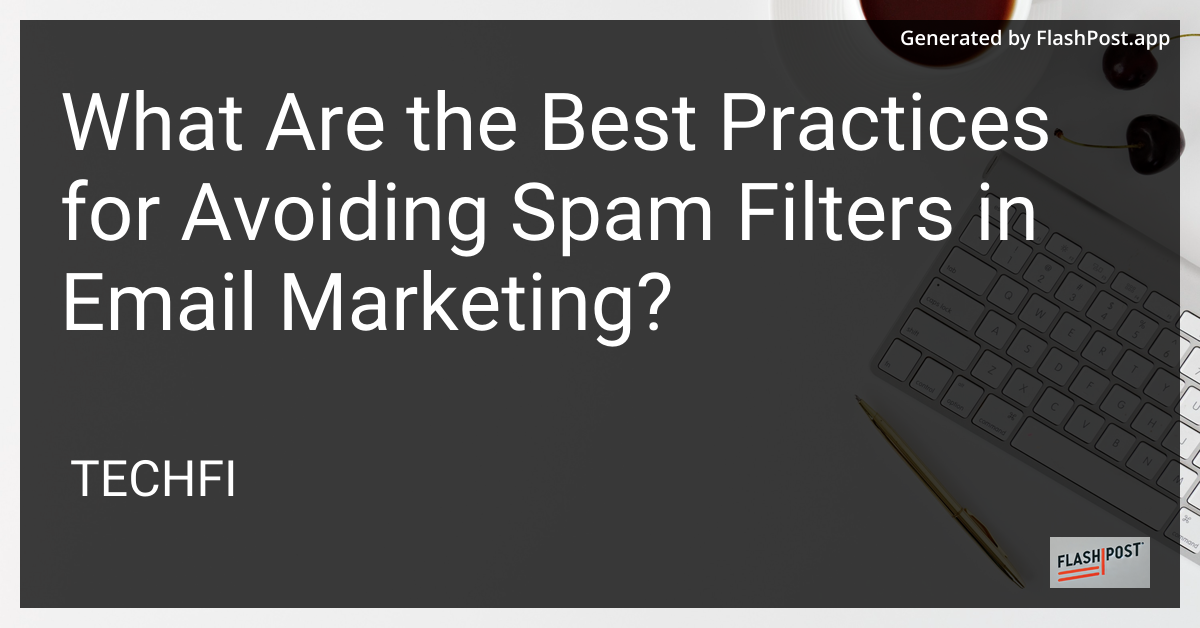What Are the Best Practices for Avoiding Spam Filters in Email Marketing?

Email marketing is a powerful tool for businesses to reach their audience effectively. However, getting your emails into the inbox without being flagged as spam is crucial to a successful campaign. This guide outlines the best practices for avoiding spam filters and ensuring your emails land in the intended inbox.
1. Get Permission Before Sending
The first step in any successful email campaign is obtaining explicit permission from the recipient. This can be achieved through double opt-in, where users confirm their subscription through a confirmation email. This not only ensures compliance with regulations but also helps maintain a list of engaged subscribers.
2. Use a Verified Domain
Sending emails from a verified domain increases your credibility with email service providers. Implementing SPF, DKIM, and DMARC records can help improve your email authentication and reduce the risk of your emails being marked as spam.
3. Create a Clear Unsubscribe Process
Ensure that every email you send includes a clear and easy way for recipients to unsubscribe. Not only is this a legal requirement in many jurisdictions, but it also improves your sender reputation by allowing uninterested users to opt out.
4. Craft Relevant and Engaging Content
Personalized and valuable content is key to keeping recipients engaged and reducing spam complaints. Segment your audience to tailor your emails to their interests, and create compelling subject lines and body content that encourages interaction.
- For tips on creating relevant content in a framework, check out bulk email sending in Laravel.
5. Monitor Your Email Engagement Metrics
Regularly monitor metrics such as open rates, click-through rates, and bounce rates. High engagement levels indicate a healthy email list, while spikes in bounce rates or spam complaints may require you to review and clean your email list.
6. Avoid Spam Trigger Words
Words like “free,” “urgent,” “cash,” and excessive use of exclamation marks can trigger spam filters. Maintain a balanced use of language and avoid all caps in subject lines and email content.
7. Send Mobile-Friendly Emails
A significant portion of emails are read on mobile devices. Use responsive design to ensure your emails look great on all devices. This reduces the risk of being marked as spam simply because the email was difficult to read.
- To learn about email sending techniques on various platforms, see email sending using Gmail SMTP in CodeIgniter.
8. Regularly Clean Your Email List
Remove inactive subscribers and incorrect email addresses. Regular cleaning reduces bounce rates and maintains a high sender reputation score.
- For insights on maintaining email lists in different environments, explore localhost email sending.
9. Test Your Emails
Before going live with an email campaign, use testing tools to verify your emails will not be flagged as spam. Many email marketing platforms have testing features that predict the likelihood of your email passing through spam filters.
- Interested in backend email solutions? Consider Laravel email sending.
10. Analyze Feedback Loops
Use feedback loops to receive notifications when someone marks your email as spam. This data can provide insights for improving your content and targeting strategies.
- Explore more about enhancing backend systems for emails with email sending using PowerShell.
By following these best practices, you'll greatly increase the chances of your email marketing efforts reaching their intended audience rather than getting lost in spam folders. Implementing these strategies allows for a more successful and compliant email marketing campaign. ```